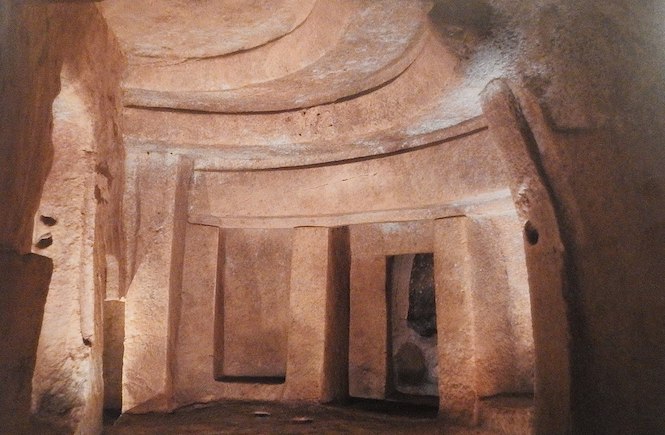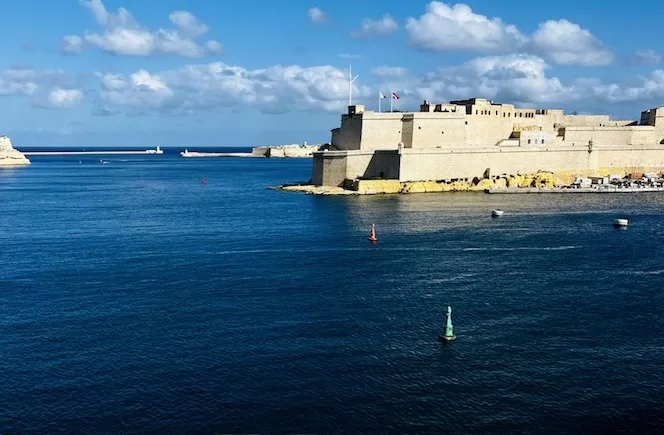Credit: Photo by xiquinhosilva, licensed under CC BY 2.0.
Just a quick heads up – some of the links I share on this site are affiliate links. That means if you click on one and make a purchase, I may earn a small commission at no extra cost to you. Your support through these links helps me create valuable content.
If you are interested in Malta’s ancient history, the Ħal Saflieni Hypogeum should be on your list. This guide will be your map to understanding this ancient underground site. I will share unique insights into the Hypogeum’s history, architecture and tips for your visit.
Since I moved to Malta in 2011, my fascination with its history and beauty has grown. I’ve explored the Hypogeum and other historic places here. And, I’m excited to share why the Hypogeum is worth visiting and useful tips for your trip.
Why Visit Ħal Saflieni Hypogeum?
Visiting the Ħal Saflieni Hypogeum requires a booking in advance but it’s worth it. Here are my 5 reasons why:
-
Unique Structure: The Ħal Saflieni Hypogeum stands out as the only known underground labyrinth in Europe. It dates back to between 4000 B.C. and 2500 B.C., and it is well-preserved.
-
Historical Significance: It’s a World Heritage Site, showcasing Neolithic history.
-
Neolithic Art: Discover rare red ochre paintings and fascinating figurines.
-
Ancient Architecture: Admire the crafted chambers and roofs.
-
Interactive Tour: A 45-minute guided journey with an audio guide and video installation.
What is Ħal Saflieni Hypogeum?
The Ħal Saflieni Hypogeum in Malta is a neolithic burial site, one of the UNESCO World Heritage Sites.
Inside, you can find three levels of chambers and rooms, some with red ochre wall paintings. This site teaches us about ancient Malta. We can learn about how people lived, what they believed and the artistic expressions of those times.
The Neolithic period is also known as the New Stone Age. This is when people began to farm and live in settled communities. This era is famous for its large stone structures.
Connecting the Hypogeum to Malta’s Ancient Temples
The Ħal Saflieni Hypogeum shares a connection with other Neolithic temples in Malta. Like these aboveground temples, the Hypogeum showcases similar architectural styles and designs.
For example, both have trilithon doorways and similar megalithic temples. It suggests that the people who built these sites had the same cultural practices.
Discovery of the Ħal Saflieni Hypogeum
Workers building houses in Paola found the Ħal Saflieni Hypogeum around 1900.
They found an underground burial site with many rooms and chambers carved out of rock. The findings revealed many Neolithic treasures.
The roof was decorated with carvings that looked like those on megalithic structures above ground. Pendants, miniature pots and various red ochre wall paintings were also found.
Among the fascinating finds were three ‘Sleeping’ figurines. The most famous is “The Sleeping Lady”. You can’t see it in the Hypogeum. It’s on display at the Valletta National Museum of Archaeology.
Credit: Photo by rob koopman, licenced under CC Attribution-Share Alike 2.0 Generic license.
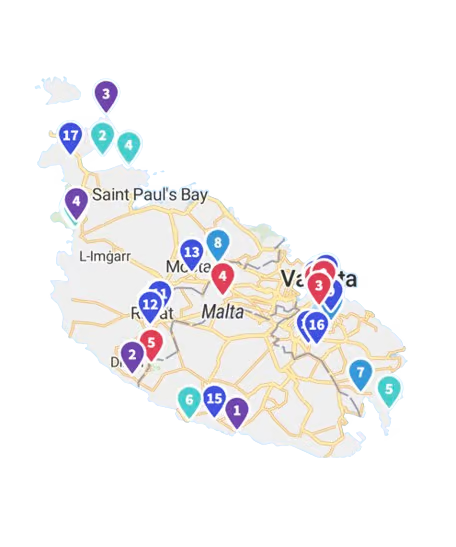
Get a FREE Attractions Map
Planning a trip to Malta, Gozo, or Comino? Get this free interactive map filled with insider tips, Google Maps links, and more.
Exploring the Levels of the Ħal Saflieni Hypogeum
The Ħal Saflieni Hypogeum in Malta is a remarkable three-level underground structure. Each level offers unique insights into the Neolithic era.
-
Upper Level: This is the oldest part of the Hypogeum. It has open spaces and small burial chambers. Significant finds here include freestanding megaliths.
-
Intermediate Level: Serves as a transition between the upper and lower levels. It features oval rooms, burial spaces and water basins.
-
Lower Level: It is famous for its impressive architecture and art. This level contains the famous ‘oracle chamber’. It has unique acoustic properties and intricate red ochre paintings.
Each level of the Hypogeum reveals Neolithic society’s sophistication and skills. It makes Hypogeum a crucial site for understanding this ancient period.
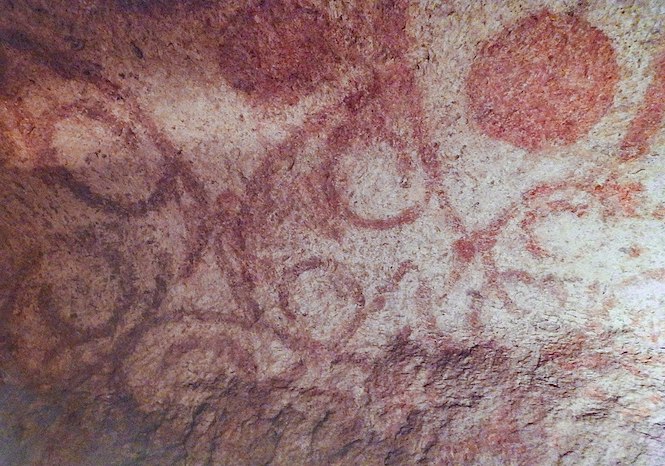
Credit: Photo by xiquinhosilva, licensed under CC BY 2.0.
Ancient Lives and Mysteries: The Ħal Saflieni Hypogeum
Archaeologists have learned much about ancient life from the Ħal Saflieni Hypogeum. They found figurines and intricate pendants, suggesting personal belongings and beliefs. The site’s chambers and wall paintings display advanced craftsmanship and artistry.
Yet, many mysteries remain. We still don’t know the exact purpose of some spaces or the meaning of red ochre paintings. This mystery continues to fascinate scholars and visitors alike.
Preservation efforts of Ħal Saflieni Hypogeum
Since its public opening, the Ħal Saflieni Hypogeum has seen significant changes. Notable was the fading of its unique paintings and algae growth due to light exposure. Now, strict measures apply to protect this ancient site for future generations.
Preservation efforts include limiting visitor numbers and controlling artificial light levels. Also, technology for microclimate monitoring is in place. These measures, initiated in 1991, help maintain the site’s integrity. It ensures its preservation for future generations.
The museum only allows 10 visitors per hour. The site remains dark, only lit during visits, to preserve its integrity. The lighting in the chambers is set up to turn on one after another. This means that as you walk, only the items in front of you are lit. I like it because it creates a mysterious atmosphere.
To protect the delicate environment, photo cameras are not allowed. This policy ensures the longevity of the site’s unique features.
Visitors navigate through the Hypogeum on walkways. These paths are safe, complete with railings, and protect the fragile rock formations beneath.
If you want to understand Malta’s history well, take a walking tour in Valletta. Look at my guide for the best Valletta walking tours.
How to Get to the Ħal Saflieni Hypogeum
By bus: Buses run frequently and connect various parts of the island to Paola, where the Hypogeum is located. Check Google Maps or this website for routes and schedules.
By taxi: For a faster trip, consider a taxi. Malta’s taxi apps are Uber, Bolt, and eCabs. It’s a good idea to compare prices across these services for the most affordable deal.
By car: If you’re driving, be aware that there is no dedicated parking at the Hypogeum. It’s free to park on the streets, but spaces can be difficult to find. I experienced this firsthand and was almost late for my visit. To avoid stress, arrive early to find a spot. Alternatively, park in the private car park here. It’s close to the Hypogeum.
Getting There:
- Location: link to Google Maps
- Nearest bus stop: Ipogew
- Walking distance from the bus stop: 5 minutes
- Frequency of the buses: every 30 minutes or less
- Parking available: street parking but limited. A private car park is available here.
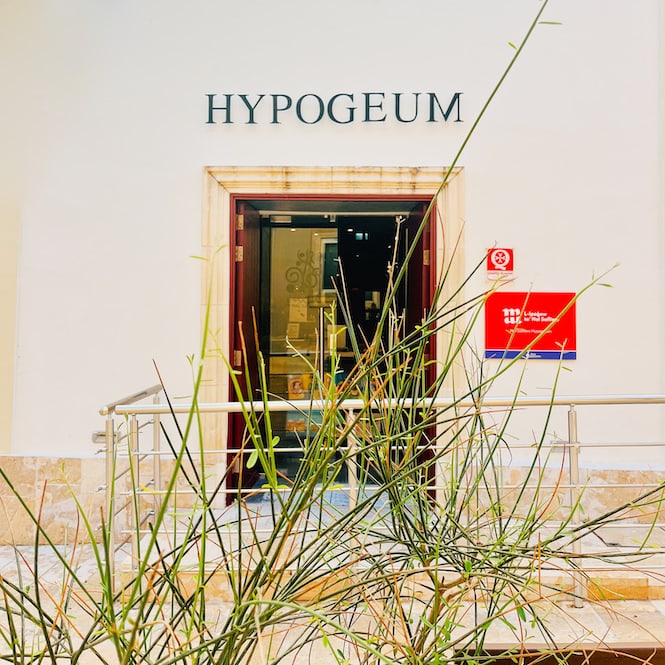
Tips for Planning Your Visit
When planning your visit to the Ħal Saflieni Hypogeum, it’s helpful to know a few key details:
Buying tickets: To visit the Hal Saflieni Hypogeum, buy tickets online. Adult tickets cost 30 euros per person. The number of visitors each day is limited, so tickets often sell out.
It’s wise to buy them 2-3 months before your visit. For example, when I wanted to visit in the summer, the earliest available tickets were for October.
Last-minute tickets: Securing last-minute tickets for the Ħal Saflieni Hypogeum is quite challenging. There are only 20 available daily for the next day. These tickets are only sold at Fort St Elmo and the Gozo Museum of Archaeology. Yet, the process operates on a first-come, first-served basis, making it a gamble. To ensure your visit, it’s wiser to book your tickets well in advance.
Arrival: Arrive at least 15 minutes before your booked tour time. This ensures you have ample time to check in and prepare for the tour.
Accessibility: The Hypogeum is not accessible to wheelchair users or persons with mobility impairments.
Photography: To preserve the site, photography is not allowed inside the Hypogeum.
Restrictions: Children under 6 years are not admitted for conservation reasons.
Facilities: There are no on-site parking facilities, and street parking is limited. It’s advisable to consider this when planning your visit to the site.
Souvenir and bookshop: Ħal Saflieni Hypogeum also features a souvenir and bookshop. Here, visitors can buy books and other items related to the Hypogeum and Malta’s other historical sites.
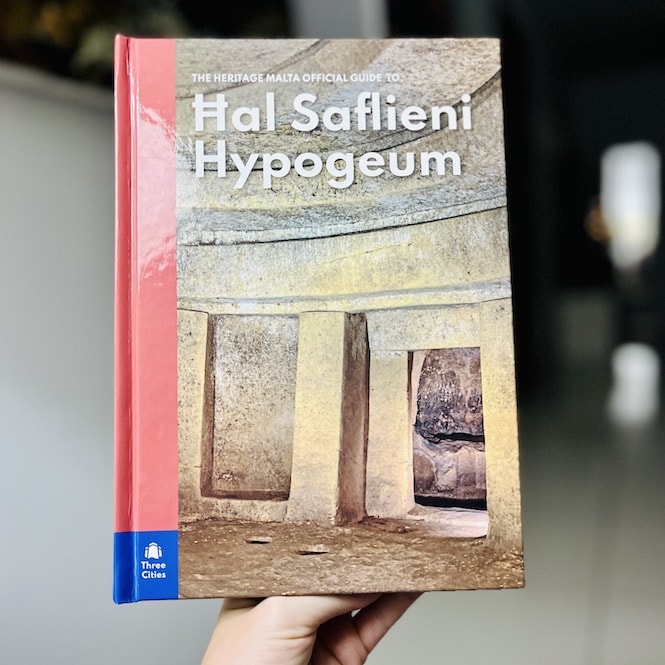
Join my FREE private Facebook group, Malta Travel Tips, where you’ll find helpful resources and connect with other travellers just like you!
Ħal Saflieni Hypogeum: FAQ
Is it worth visiting the Hypogeum Malta?
Absolutely. It’s Europe’s only known underground ‘labyrinth’ from around 4000 B.C. to 2500 B.C., remarkably preserved. The tour is fascinating, covering the site discovery and its findings. You’ll enjoy an audio tour in various languages, lasting about 45 minutes, packed with interesting information.
What does the Hypogeum mean in Malta?
It’s a prehistoric burial site dating from 4000 B.C. to 2500 B.C., known for its intricate underground chambers and red ochre paintings.
How long is the Hypogeum tour?
The tour lasts approximately 45 minutes and includes an audio guide and video installations for a comprehensive experience.
How deep is the Hypogeum in Malta?
The Hypogeum extends several meters underground, across multiple levels. The deepest room in the lower level, with four side niches, is 10.6 meters below road level.
What was the Hypogeum known for?
Famous for its complex underground structure, it provides valuable insights into Neolithic life, including the notable Sleeping Lady artefact. It dates back between 4000 B.C. and 2500 B.C.
How old is the sleeping lady of Malta?
The Sleeping Lady dates back to the Neolithic period, around 4000 B.C. to 2500 B.C.
Why was the Hypogeum built?
It was primarily constructed as a burial site, but it may have also served other ceremonial purposes.
Who built the Hypogeum?
The Hypogeum was built by the Neolithic inhabitants of Malta. Details about the specific builders remain unknown.
The Ħal Saflieni Hypogeum is a must-see because it’s a rare piece of history you can’t find anywhere else in Europe. Remember, book your tickets early to avoid missing out.
Also, take a look at my other guides for more great places to visit in Malta, like Malta’s top historical sites, UNESCO sites, Valletta, the Three Cities, Mdina, Mnajdra Temples, and Ta’ Bistra Catacombs. They’ll make your trip even more amazing!

